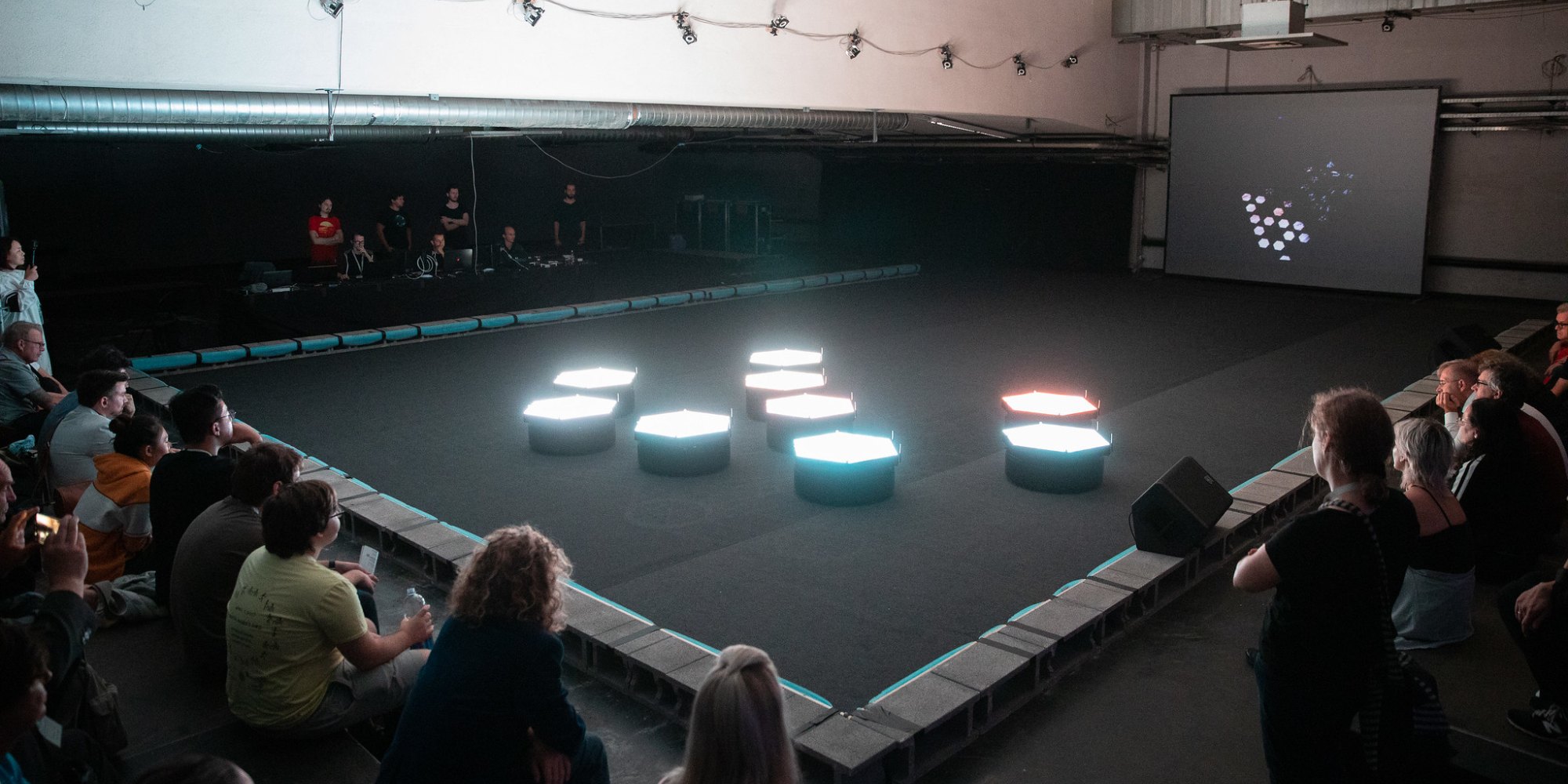2018
Swarm Arena

A swarm of ground display bots offer spectators in a stadium additional information about the ongoing tournaments. The dynamically reconfigured formations of the moving screens form a “liquid display“.
2018

A swarm of ground display bots offer spectators in a stadium additional information about the ongoing tournaments. The dynamically reconfigured formations of the moving screens form a “liquid display“.
All Rights Reserved, 2025